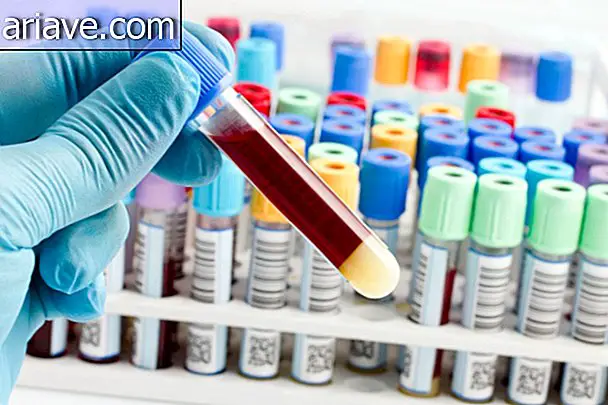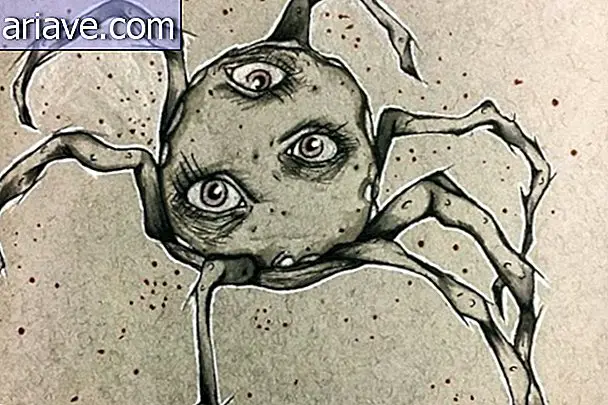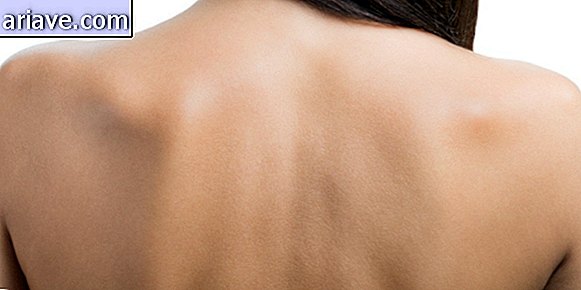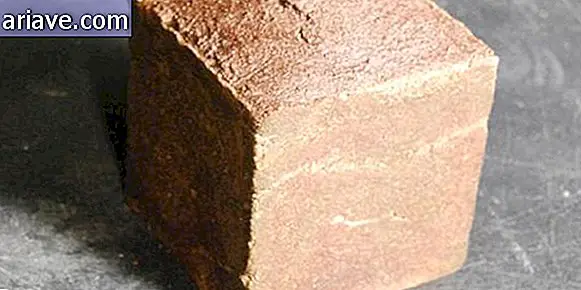8 Things Our Nails Can Say About Our Health
It may not seem like it, but our nails have many important functions to play: they protect fabrics, are essential for scratching and also act as windows for our overall well-being. To clarify the last factor, in fact, nails can also tell us a lot about our health, showing signs of malnutrition, infections and even serious illnesses.
The nails are layers of keratin and made up of various parts. The nail blade is the hard, protective, and most visible part. It originates in the nail bed, which is under the nail, and in the matrix, which is the connective tissue from which the keratin portion is born. This place is full of nerve endings.
In addition, we still have the paronychia, which is the fold of skin that is on the sides of the nail. That white "crescent moon" at the base of the nails under the nail plate is called the lunula, and the tissue overlaid at the base of the nail is the cuticle. The fingernails grow by 2 to 3 millimeters per month and the toenails by about 1 millimeter. A curiosity is that growth is faster in the summer months and in its dominant hand.
Shaved or longer, painted or not, one thing is certain: healthy nails mean health to you. Check below some conditions and diseases that can be "reported" by the appearance of nails:
1 - Thyroid Disorders

Thyroid disorders (such as hyperthyroidism and hypothyroidism) are often associated with weight loss or gain, respectively. However, doctors also relate nail changes to thyroid disease.
The presence of onycholysis often occurs with hyperthyroidism. Also known as a Plummer nail, this condition occurs when the nails detach from the nail bed and may or may not be raised further. This elevation may occur at or at the tip of the nail.
Because dirt and moisture can easily get under the raised nails, Plummer's nail condition can easily lead to bacterial and fungal infections. In the case of very round and concave nails, which also appear to be slightly offset from the bed, this may be a symptom of hypothyroidism.
Therefore, it is important to consult a doctor as soon as possible if you notice any such characteristics.
2 - Cardiovascular problems

Common risk indicators for cardiovascular problems are usually high blood pressure and high cholesterol. But what about the condition of your nails, does it help to report any risk? Yes, there are a number of nail changes that can indicate cardiovascular disease.
So-called shrapnel hemorrhages appear as thin, red bloodlines that occur under the nails (image above). This condition may be a sign of endocarditis, a heart valve infection, or vasculitis, blood vessel damage. These bleeds can be caused by tiny clots that damage the small capillaries under the nails.

In addition, congenital anomalies of the heart can lead to a deformity that leaves the fingertips and nails well rounded, as in the image above. In this condition, the nail bed usually becomes wider and rounder than normal. Other signs that may indicate cardiovascular problems are "spoon" nails, pale or bluish nails.
3 - Anxiety and stress

Nail biting is a habit that denotes nervousness or stress, but people can also do so when they are bored. However, it is a habit that must be controlled as it can lead to recurring infections.
For men, keeping them well trimmed can alleviate the problem. For women, keeping them painted with nail polish or a foundation also helps. But if the nail biting problem persists, it is good to consult a doctor to check the psychological root.
In some cases, nail biting can be classified as an impulse control disorder. This condition, which may indicate an anxiety or compulsive disorder, may require behavioral therapy. If nail biting is accompanied by hair pulling or self-harm behavior, it is important to seek medical help.
4 - Diabetes

If you usually paint your nails, you will notice that they tend to have a yellow tint after you have removed the nail polish. However, if the nails remain yellow for many days, staining may have a more serious cause: diabetes.
Diabetes can lead to yellowing of the skin and nails, but is usually more evident on the nails. The color change is probably caused by glucose binding with the collagen proteins in the nail. If your yellow nails are not returning to a normal tone, and if you are also experiencing other symptoms such as increased thirst and urine, it is best to consult your doctor immediately.
5 - Lung problems

In some phases of world fashion, many women have adopted nail polish of various shades of blue to color their nails. However, when the nail is bluish and there is no nail polish on it, the thing can be really serious.
Blue nails (especially when combined with blue lips) can mean that you have an oxygen-related health problem such as low hemoglobin, asthma, chronic obstructive pulmonary disease (COPD), bronchitis or pneumonia.
In addition to lung problems, blue nails may indicate certain heart conditions. If your nails have turned blue regardless of the condition, it is usually a sign that your illness has become severe. Emergency medical attention may be required.
6 – Rheumatoid arthritis

Arthritis is generally considered to be a painful disorder that affects the elderly, with osteoarthritis being more common. However, there are actually more than 100 diseases that qualify as types of arthritis, and the following conditions may lead to nail changes:
- Osteoarthritis: Weak nails caused by selenium deficiency are often observed in people with this form of arthritis.
- Psoriasis: yellow, wavy nails and splinter hemorrhage may be signs of psoriatic arthritis;
- Lupus: Inflated fold is a symptom when the skin swells around the base of the nail. It is often seen in connective tissue disorders such as lupus;
- Rheumatoid Arthritis: The red lunula that appears in people with rheumatoid arthritis often occurs due to prednisone treatments for the disease;
- Kawasaki disease: This disorder can lead to onicomadesis, loss of nails.
7 - Nutritional Deficiencies

You are what you eat: Health on the inside will reflect beauty on the outside. Healthy nutritional choices include foods rich in omega-3 fatty acids, lean protein and iron to help you have healthy hair, skin and nails.
Nails may reflect some nutritional deficiencies, such as low levels of iron, biotin and protein. Most nail problems are not related to your diet, but if you have an iron deficiency, your nails can report it. For example, if they are whitish, it may be a common sign of anemia.
8 - Infections

Painful, red, itchy skin around your nails is great evidence that something is not right. As in other parts of the body, the nails of the hands and toes are prone to infections, usually occurring in adults and caused by fungi, bacteria and viral warts.
Nail infections do not necessarily indicate serious health problems, but they need to be treated by a doctor, especially if you have a condition that weakens the immune system.
Fungi are the most common offenders and are difficult to treat, often requiring long-term treatment with specific medications. The extended time taken to take care of these conditions is because, in many cases, full healing is only achieved after the nails have gone through a complete growth cycle.
Bacteria and viruses also cause somewhat unpleasant changes to nails. Bacterial infections can cause nail loss if left untreated, while those with viruses can cause warts around or even under the nails, which the doctor may cauterize and prescribe medication for the problem not to return.
Many of these infections can be prevented with proper hygiene, use of disposable or sterile manicure materials, non-sharing of personal items such as earwigs or nail clippers, and other care.
* Posted on 16/07/2014











